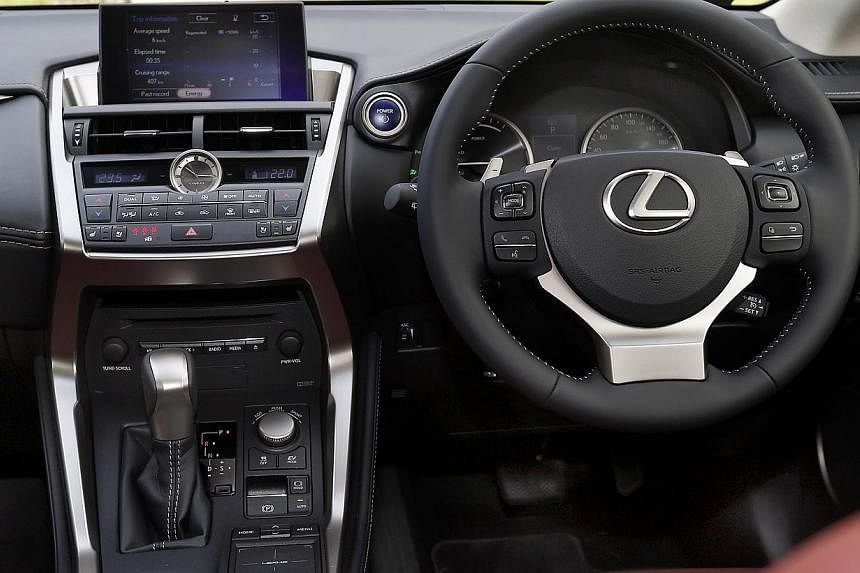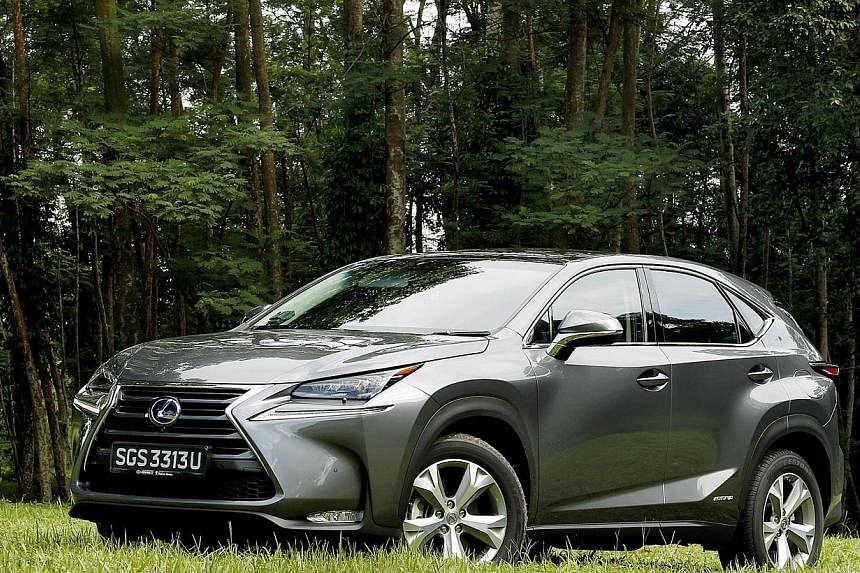The concept of a vehicle platform is somewhat dated. These days, a platform - think of it as the dough of a pizza - is often modular.
Which means manufacturers face fewer constraints when building cars with a "common" platform. A good example would be the Volkswagen Touareg, Audi Q7 and Porsche Cayenne - three cars with shared base components but each with its own look, feel and flavour.
They do not even have the same wheelbase measurement, which is often a tell-tale sign of shared platforms.
The same goes for the new Lexus NX, which is based on the Toyota RAV4. In this case, the two cars have the same wheelbase length of 2,660mm.
But beyond that, they are rather different. The Lexus is noticeably wider and sits closer to the tarmac. This not only makes the car appear more planted and visually sportier, it also makes it a more dynamic creature on the go.
To demonstrate this dynamism, Lexus agent Borneo Motors held the launch of the car at a new go-kart circuit in Turf Club. Journalists were allowed to drive the NX around the tight and twisty track designed for vehicles that are mere millimetres away from the ground.
And it is surprising how well the NX holds up in such an environment, one that is rarely replicated so extremely in the real world.
Its all-round independent suspension keeps the car on an even keel effortlessly despite its tallish stance. Whatever the car's excellent chassis cannot handle on its own is left to the wheels. The NX wears 18-inch aluminium alloys shod with 225/60 tyres.
In the petrol-electric NX300h, there is also the additional traction of all-wheel-drive. Instead of traditional means of distributing torque between the two axles, Lexus employs two motors - one in front and the other at the back.
But the rear motor is a relatively puny 50kW unit that puts out 139Nm. The front gets a 105kW, 270Nm unit.
So the NX300h is primarily a front-wheel-drive, with propulsion coming mainly from its 2.5-litre four-cylinder high-compression engine.
The car relies on its front motor under light-load conditions, such as in a carpark or pulling into or out of a driveway. The motor also kicks in when extra boost is needed, for instance, when overtaking.
The rear motor comes into play when the car senses slip in the front axle. And 139Nm of torque is apparently enough to restore stability.
If the enthusiastic jaunts at the go-kart circuit are anything to go by, the system works brilliantly.
Lexus owners will find many things familiar with the NX. Its new, edgier design language for instance.
Even though it can be considered as a younger brother to the Lexus RX, there is very little resemblance between them. Compared to the NX, the RX is actually bulbous and blobbish.
Immaculate attention to detail is another thing buyers will notice. The cabin is first rate - even the hard plastic fascia top is given a luxurious look with faux double stitchings.
Everything onboard is a joy to touch. And everything works flawlessly. Brush your hand gently over the cabin lights to turn them on; there is no need to feel around in the dark for the right button to press.
There are more clever features in the cabin, such as a wireless phone charger, a touch pad that lets your finger work the cursor and scroller on the car's 7-inch infotainment monitor, and push-button controls to fold and unfold the rear seats.
Lexus could have gone one step farther by making the tailgate hands-free, though.
What Lexus fans might find unfamiliar is the ride quality. The NX is noticeably firmer than what people normally expect of a Lexus, but the gain in handling finesse is worth the trade-off.
The compact Lexus is marketed against cars such as the BMW X3 and Audi Q5. But in terms of look and feel, the Range Rover Evoque is probably its closest rival (it has exactly the same wheelbase length as the Lexus).
The NX, however, is streets ahead in fit and finish, efficiency (thanks to its hybrid drive system) and overall driveability.
The Evoque looks sharper and is seemingly sportier. But Lexus will counter that very soon, with a lighter and racier turbocharged version of the NX.


